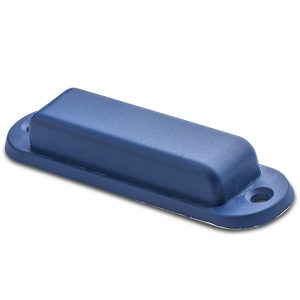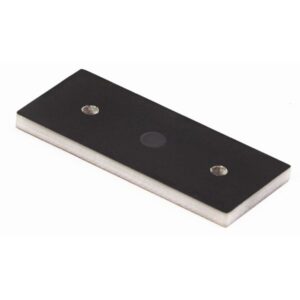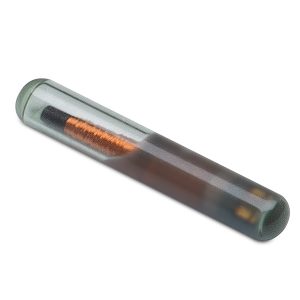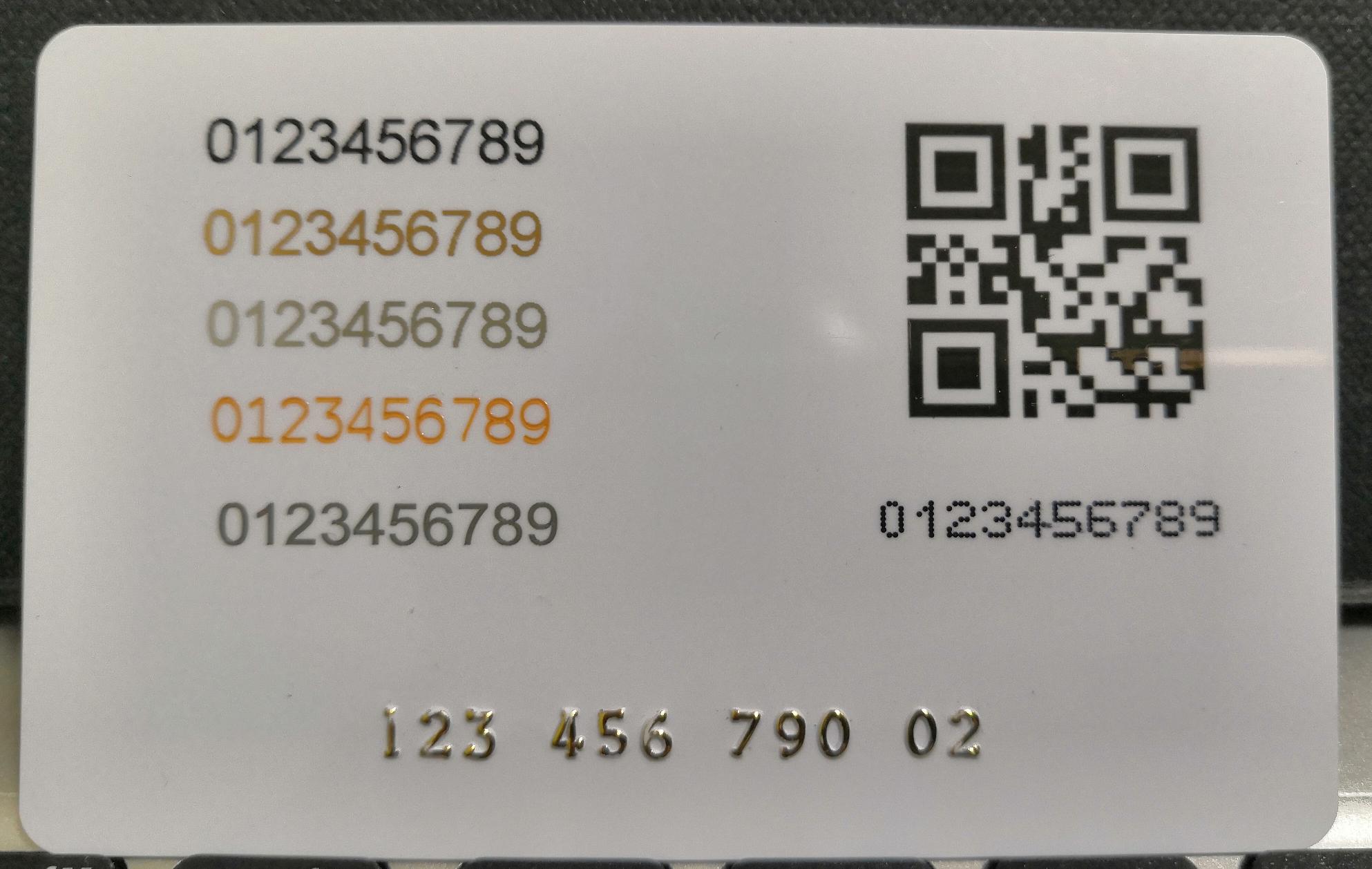While exhibiting at Pack Expo last October in Chicago, one of the most frequent questions I was asked was: How much does an RFID tag cost? My answer: 12 cents to more than $20. That’s a huge spread. I then explained further that the cost of a tag depends greatly on how it is constructed. This is directly related to its intended use. More specifically, the environment it needs to survive and for how long. Add in manufacturing complexity and efficiency that ramps with quantity of tags produced and at what speed a tag design can be churned out. If you can tell me more about what you are trying to tag, I can provide a more refined answer to what tags at what price points are good options. This blog helps explain some of the different tag constructions and why the cost what they do. This posting is only intended for general information. Feel free to use the contact us section with any specific questions.
Inlays, the Basic Building Block of RFID Tags
For HF and UHF tags, the simplest, lowest cost tags are called dry inlays. Dry refers to no adhesive added. Inlay refers to the most basic, unprotected RFID tag construction. The basics are an antenna made of a thinly applied layer of metal, typically aluminum, on the surface of a plastic film substrate, typically PET, the same plastic used to make soda bottles. For inlays that need to endure higher temperatures, polyamide film is used in place of PET. Recent inlay developments include direct to paper inlays where the antenna is printed directly onto paper. Paper stretches and is porous which can damage the integrity of the inlay more easily than plastic film. This ecofriendly construction is very practical for apparel hang tags that have a limited life in a well-protected environment.
The IC chip gets applied to the inlay antenna with precision pick and place robotics referred to as flip chip. Then the chip’s electrical contact bumps are glued to the antenna using electrically conductive adhesive that cures instantly from a very brief exposure to UV light. Dry UHF inlays can cost in the sub-dime range, especially if ordered in the hundreds of millions. HF dry inlays test to cost more than UHF ones. Their antennas are a more complex 7 to 13 turns of concentric coil. In addition to attaching the chip to the antenna,
there is also a crossover bridge to connect the inner and outer ends of the coil to each other. Two connections on an inlay means two processes and two places for a potential manufacturing defect to be factored into production yield loss. LF tags need about 200 turns in their coils. The most practical way to construct an LF antenna is to wind very fine gauge copper wire. Attaching a tiny chip directly to a copper wire strand as thin as a human hair is no easy fete. Therefore, the most common attachment method is to use a chip module
which is tiny stamped metal mounting frame for the chip. The chip is fitted into the center of the module and the wire antenna ends are soldered to the larger module surfaces, not to the chip itself. That said, HID Global has a patented a process for direct to antenna wire attachment called DBond™. This process eliminates the module, but not every RFID chip can work with DBond™. Due to the varied thickness and bulk, LF inlays are typically converted into plastic cards or other thicker constructions, not labels. As you can guess, LF inlays are more costly to produce than HF or UHF which benefit from roll-to-roll continuous production at higher speeds than windings of copper wire and soldering chip modules or chip to it one by one.
Life Expectancy and Fitness for Use
For UHF and HF, adding adhesive on one side of the inlay and a white printable surface on the other makes for an RFID label with greater utility and durability at a slightly higher total cost due to the added materials to the overall construction.
The life expectancy of an RFID label applied to a cardboard box containing archived business records resting undisturbed on a shelf in a climate-controlled warehouse will last decades. That same label applied to a rental kayak kept outdoors and used daily won’t last much more than a few days or weeks at best. The kayak needs a much more durable tag that can survive exposure to the elements, salt water, getting knocked and bumped around.
Plastic RFID cards are an example of a basic durable tag. Cards are made from several layers of plastic sheets with the inlay encapsulated within the center layer. Heat and pressure fuse the layers together. It’s a waterproof construction, can be made from plastics that are sun exposure resistant, can be printed on, and can be produced en mass on existing high volume card manufacturing lines. They can be applied to items like rental kayaks with epoxy glue or plastic screws that don’t corrode from salt water exposure and will typically last the life of the kayak. Rear view mirror hang tags are another good example of plastic RFID card constructions.
Even more durable tags are inlays encapsulated in over molded or injection molded plastic. They are much thicker, stiffer, and more durable than thin plastic cards. The choices of plastics are greater for many different needs and environments. The overall tag construction can be made for use on surfaces that are not as RFID friendly as plastic kayaks. Such items include metal gas cylinders and beer kegs. There are over molded tags designed to be placed on concrete floors to act as pathway guides for automated guided vehicles to travel over as well as being stepped on and rode over with forklifts.
Other Ways to Make a Tag
Inlays aren’t the only way to make a transponder. PCB (printed circuit board) tags are just as the name implies. They are usually made from fiberglass epoxy composite laminate material similar or identical to circuit boards. The antenna is created on the PCB material
using traditional circuit board photo etching techniques and the chip is attached using soldered connections. It makes for a very robust tag, great for use cases where stiffness is desired. PCB tags are good for high vibration environments. The chip being soldered to a mechanically strong circuit board means it won’t easily shake loose over years of vibration exposure. These tags also maintain integrity at higher temperatures than PET inlays. Printed circuit boards are produced on very fast manufacturing lines. Chip attach can be very efficiently accomplished with existing board stuffing robotics.
Ceramic tags are some of the most durable RFID tags. Ceramic tags are typically fabricated from LTCC (low temperature co-fired ceramics). Multiple layers of these ceramic sheets with conductive antenna patterns printed on them are assembled and fired to fuse the layers into one solid construction. The design typically contains a cavity for the IC chip to then be attached with solder bonding to antenna pads in the cavity on the ceramic surface. The cavity is then filled with a high temperature resistant resin. This package then receives a ceramic top or other suitable material to fully encase the contents.
Ceramic tags are the choice for use in harsh environments such as high temperatures and strong chemicals. Their 3D antenna elements within allow for antenna designs that overcome the interference caused by on-metal use where most RFID tags do not perform well. They can be made small yet efficient to read. With these characteristics, they are used on or potted into metal tooling. Some ceramic tags are specifically designed for surgical hand tools that undergo routine autoclave steam sterilization and washing in harsh chemical solvents and enzymes.
Most people will recognize glass tags as pet tags or livestock tags. When a dog or cat is “chipped” it is likely with a subcutaneously inserted glass RIFD tag encased in bioactive glass commonly called bioglass for short. Bioglass is biologically inert an
d can bond with living tissue, so that glass tag in the animal’s neck will remain in place when connective tissue eventually adheres to it. Because glass tags can be manufactured as small as 6mm in length, they are ideal for small animals like birds, rodents, or fish and small parts identification including medical parts identification.
Glass tags are small cylindrical beads with the chip attached to a copper wire coil antenna wound around a carbon rod within the core of the glass bead. Most Glass tags are LF or HF which can better communicate through the water contained in tissue. Glass tags are manufactured on high-speed glass encapsulation machines. The antenna cores and chip attach are also highly automated.
So what’s the right tag at the right price point for me?
Contact us with your use case, especially if you don’t see an exact needs match on the webstore. Recently, a customer contacted us in need of a very specific chip in a tag package that would survive attachment to agricultural parts. After a brief discussion and sending samples to confirm the tag worked in his existing software and readers network, we saved him a lot from the “recommended” tag he had been buying in the past.







0 Comments